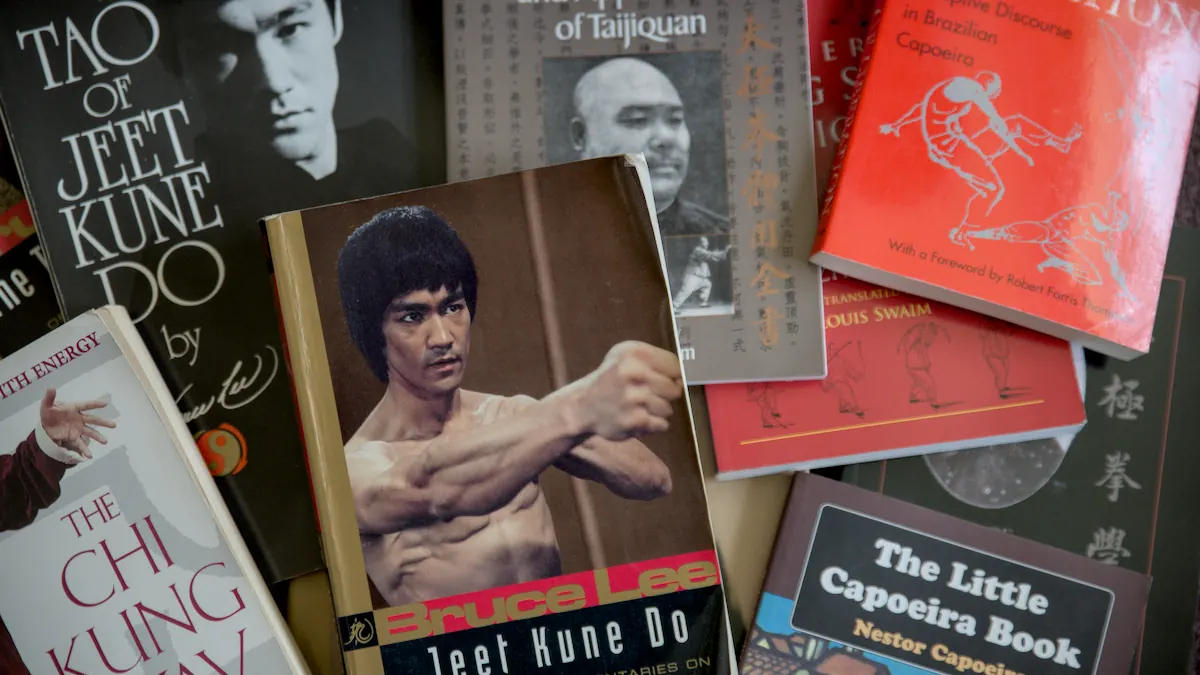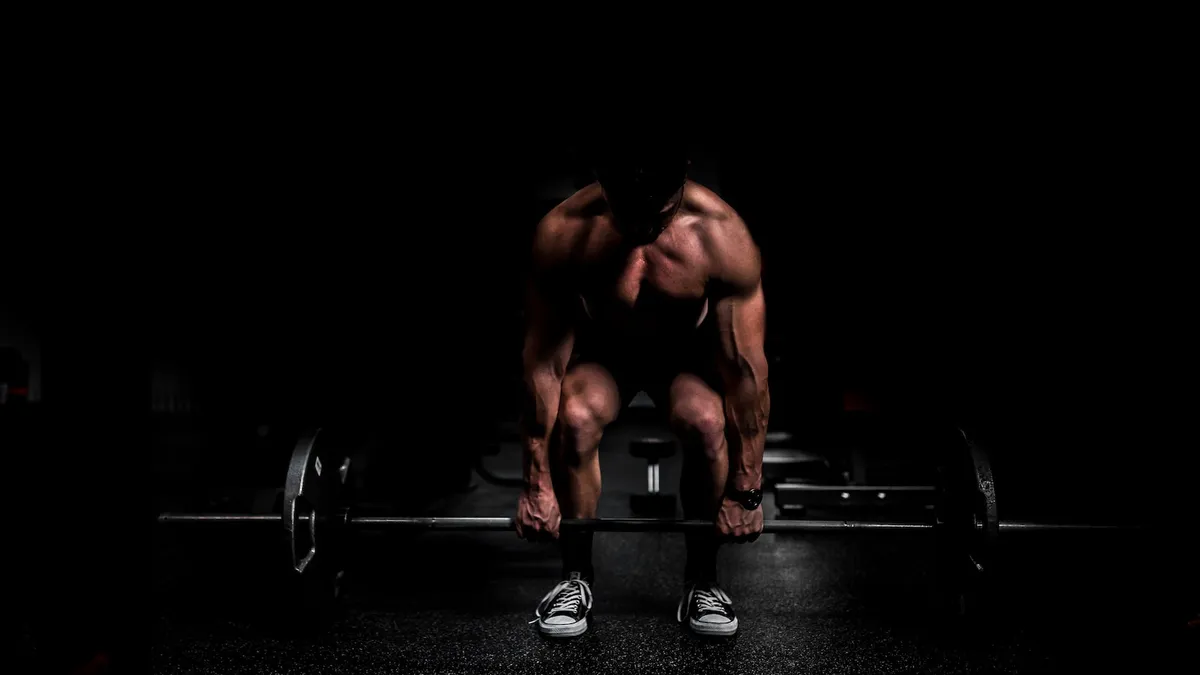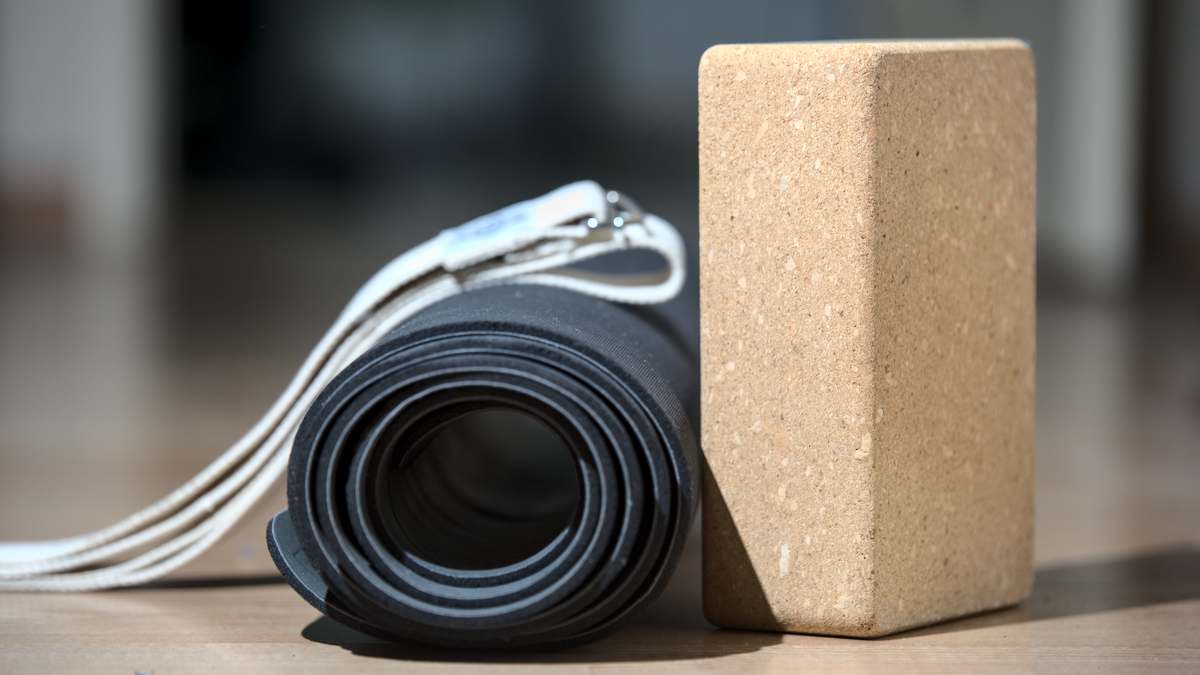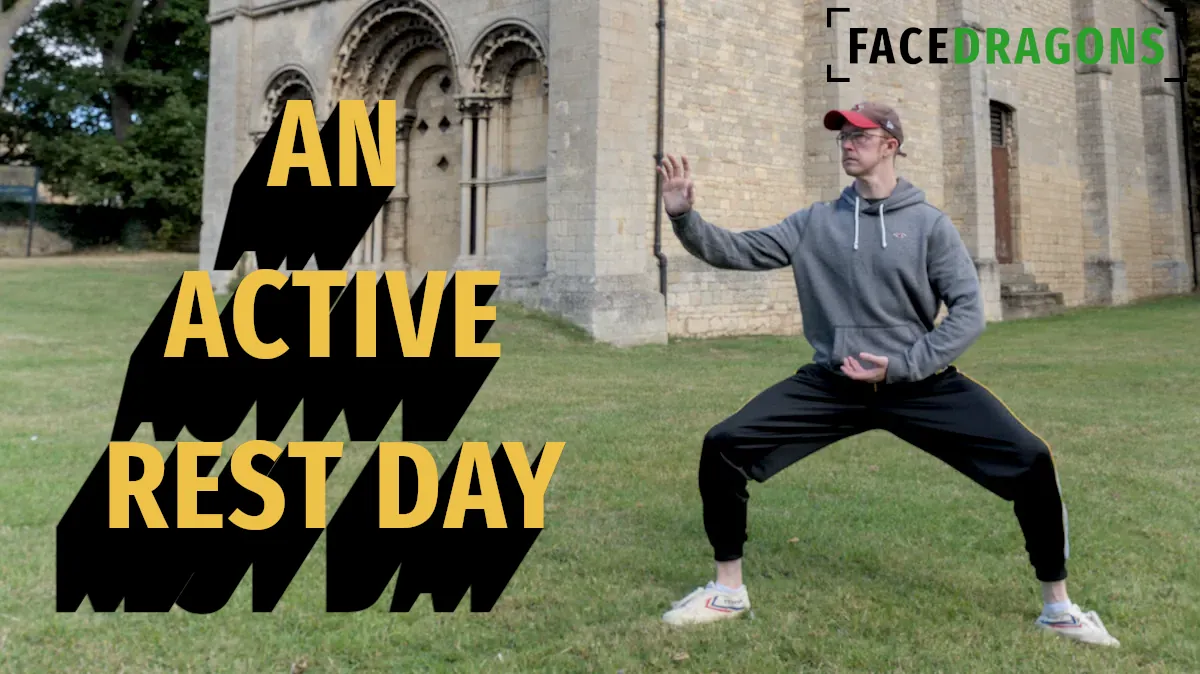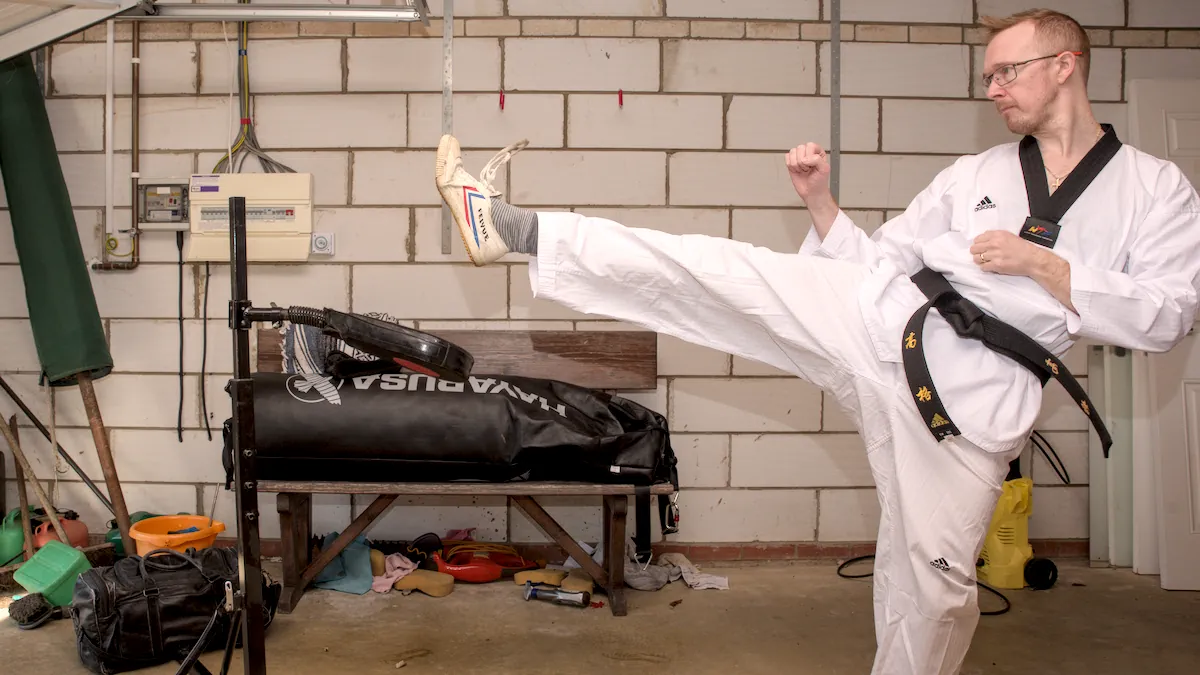Are you an experienced black belt looking to add some of the best martial arts books ever written to your collection? Or a beginner who wants to read the words of the greatest martial arts masters? Whatever the style you learn, you’ll want to order some of these classic martial arts books and become a better fighter and a more well-informed one.
Part of becoming a better man is reading great books, similarly reading great martial arts books will make you a better martial artist.
The Book of Five Rings
- Author: Miyamoto Musashi
- Style: Any Style, Japanese Martial Arts
- Buy it here: The Book of Five Rings
If you’ve been interested in Japanese martial arts for any length of time, you’ll have heard about “The Book of Five Rings.” Written by Miyamoto Musashi, a legendary swordsman from the 17th century, this classic martial arts treatise focuses on strategic, tactical, and philosophical aspects of the art of swordsmanship.
Don’t let that fool you into thinking this book is only for martial artists studying the way of the sword. However, Murasashi’s martial philosophy has applications for all martial arts and living a better life. Here are the core concepts for each of the five sections:
- The Book of Earth (Chi no Maki): This section emphasizes the fundamental principles of strategy, such as the importance of knowing oneself and one’s opponents and the need for adaptability in combat.
- The Book of Water (Sui no Maki): Musashi discusses the concept of fluidity and how to adapt to changing circumstances in battle. He emphasizes the importance of switching between different techniques and tactics seamlessly.
- The Book of Fire (Ka no Maki): In this book, Musashi delves into the psychology of combat, discussing the importance of timing, rhythm, and psychological pressure. He also explores the “no-mind” concept, a state of heightened awareness and focus.
- The Book of Wind (Fu no Maki): Musashi focuses on the techniques and strategies of combat, providing practical advice on various aspects of swordsmanship, including stances, footwork, and specific techniques for defeating opponents.
- The Book of Void (Ku no Maki): The final book explores the concept of emptiness or the void. Musashi discusses the idea of transcending technique and strategy to achieve a state of pure awareness and presence in combat and life.
Order it now if you have not read this book and call yourself a martial artist. Don’t take my word for though; Bruce Lee was known to have learned from this martial arts classic, and Joe Rogan, Henry Rollins, and Stephen R. Covey (author of the classic self-help book The 7 Habits of Highly Effective People) all praise The Book of Five Rings.
Tao of Jeet Kune Do
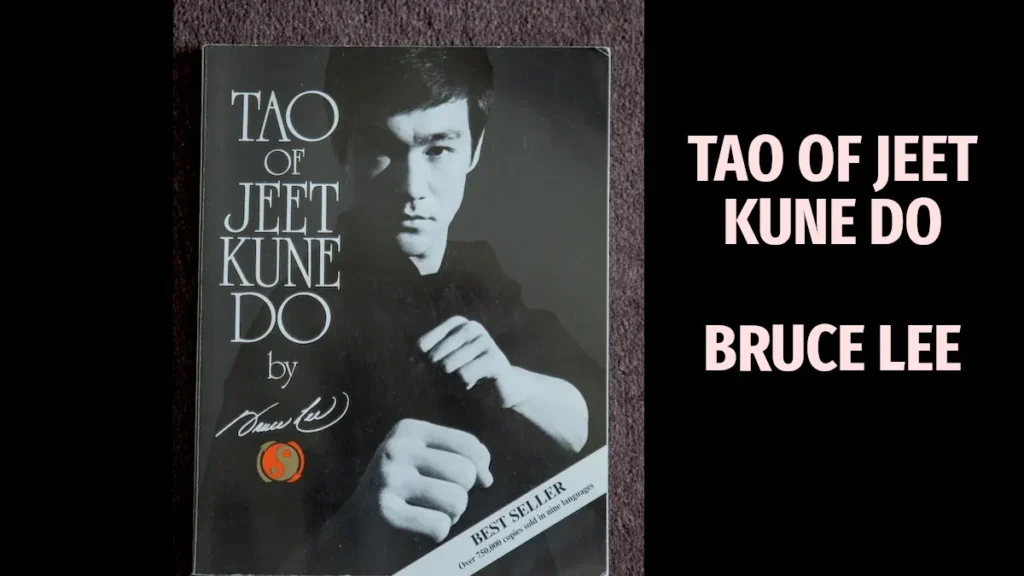
- Author: Bruce Lee
- Style: Any Style, Chinese Martial Arts, MMA
- Buy it here: Tao of Jeet Kune Do
If you’ve read the book Bruce Lee published during his lifetime, Chinese Gung Fu: The Philosophical Art of Self-Defense, you’ll understand why I’ve included his post-humus publication, The Tao of Jeet Kune Do, instead.
While his first book focuses much more on classical kung fu and its Wing Chun influence is evident, the Bruce Lee that everyone came to know and love had moved on from these ideas just a few years after his first book was written. Jeet Kune Do resulted from this development and marks a deeper understanding of martial arts, body mechanics, and philosophy.
Where the former book shows you a technique, the latter shows a concept. Where the former tells you how it should be done, the latter implores you to find the correct way for you, with guidance on how to do so.
This philosophical shift set Bruce Lee apart from other martial artists at the time. Although this was published much later, John Little does a great job of including Bruce’s original writings and drawings to take us on the journey along with Bruce.
Karate-Do: My Way of Life
- Author: Gichin Funakoshi
- Style: Shotokan Karate
- Buy it here: Karate-Do: My Way of Life
Are you learning Karate? You won’t want to pass this book by. The founder of Shotokan Karate-Do, Gichin Funakoshi, wrote this autobiographic book detailing the development of his art and other topics any karate practitioner should know:
- The Philosophy of Karate
- The history of Karate
- Karate Techniques
- Using Karate for self-defense
- The Spread of Karate
- The Future of Karate
The philosophical aspects of Karate explored in Funakoshi’s work will likely be more attractive to you as a martial artist of any style, as the techniques in the book are primarily fundamentals. Funakoshi believed Karate was the best path to building self-discipline, humility, and respect.
Karate is the way of self-improvement in the author’s eyes, and as the founder of a significant karate style, this book deserves a place on your bookshelf.
Bushido: The Soul of Japan
- Author: Inazo Nitobe
- Style: Any Style, Japanese Martial Arts
- Buy it here: Bushido: The Soul of Japan
Bushido is the martial arts ethic developed out of Japan from the Heian period (8th century), eventually codified during the two-and-a-half centuries of peace in the Edo period (1603–1868.)
The Bushido, sometimes called “the way of the warrior,” is a code of conduct that governs the behavior of the Samurai in Japanese society. Many writers explored the idea of Bushido over the centuries, but Inazo Nitobe, in 1900, released the most accessible, “Bushido: The Soul of Japan.”
It’s from Nitobe that most modern martial artists understand this ancient ethical code. In Nitobe’s book, he outlines the seven core virtues of the Bushido:
- Rectitude (Gi): Acting with moral integrity and doing what is right.
- Courage (Yū): Overcoming fear and acting bravely in the face of adversity.
- Benevolence (Jin): Showing compassion and kindness toward others.
- Respect (Rei): Treating others with politeness and courtesy.
- Honesty (Makoto): Being truthful and sincere in one’s words and actions.
- Honor (Meiyo): Upholding a solid sense of personal and familial honor.
- Loyalty (Chūgi): Demonstrating unwavering allegiance and devotion to one’s lord or master.
He then shows how a modern individual might apply the Bushido in different aspects of their life, such as family, education, or business.
Mastering Yang Style Taijiquan, Fu Zhongwen
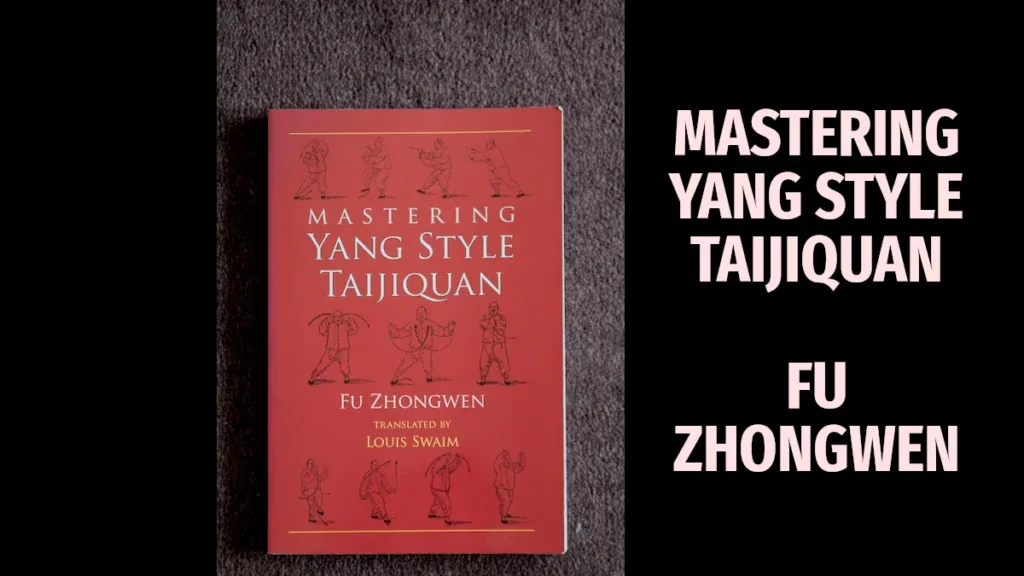
- Author: Fu Zhongwen
- Style: Yang Style Tai Chi
- Buy it here: Mastering Yang Style Taijiquan
When considering buying a new martial arts book, Tai Chi may not be the style you first think of. But it should be because plenty of early tai chi books are available in translation. They give an insight not only into the author’s martial arts but also into the time and place they were written.
In Mastering Yang Style Taijiquan, there’s lots to like. A complete run-through of his 85 posture form with illustrations and detailed written explanations make this a great book for learning martial arts by yourself, there are also sections on:
- Push hands
- A discussion of tai chi practice
- Fu Zhongwen’s “Ten Essentials”
In the English translation by Louis Swaim, there is also an excellent appendix that contains:
- The Taijiquan Treatise
- Song of the Thirteen Postures
- The mental Elucidation of the thirteen postures
- The Taijiquan Classic
- The Song of Push Hands
Muay Thai: The Essential Guide to Mastering the Art
- Author: Kru Tony Moore
- Style: Muay Thai, MMA
- Buy it here: Muay Thai: The Essential Guide to Mastering the Art
There are some old manuscripts, such as “The Boxing Book of Wisdom” (Luk Mai Muay Thai), which detail Muay Thai and some of its techniques, but it’s only in the modern era that many of the now classic Muay Thai books were written.
Kru Tony Moore wrote this book, Muay Thai: The Essential Guide to Mastering the Art, in 2004 as a reference not only to the techniques of Muay Thai but also to the history and culture.
Aside from Jiu-Jitsu, no other martial art is more relevant in modern times than Thai Kickboxing, thanks primarily to MMA promotions like the UFC showcasing the power of this ancient Thai style. It has become a must-learn for anyone wanting to compete in MMA and the most effective striking style, displacing martial arts such as Karate and boxing.
Whether or not you’re interested in competing as a kickboxer or MMA competitor, you should have some understanding of the art of Muay Thai, and this book is a must-have for any martial artist.
Kodokan Judo: The Essential Guide to Judo
- Author: Jigoro Kano
- Style: Judo
- Buy it here: Kodokan Judo: The Essential Guide to Judo
Judo was the forefather of Brazilian jiu-jitsu aikido and heavily influenced wrestling styles like Sambo. There’s a thick branch of the martial arts tree that belongs to Judo, and it all started with the author of this book, Jigoro Kano.
In Kodokan Judo, Kano covers the fundamental throws, pins, joint locks, and strangles integral to Judo’s curriculum. Anyone wanting a comprehensive guide to Judo’s principles and techniques must read this book. It’s not that you can’t find the information in other books or even YouTube videos, but why learn it secondhand? Go to the source and founder of the style, Jigoro Kano.
Aside from the techniques explained in the book, Kano also gives a valuable history of Judo and talks about the philosophy of the art he created.
You rarely find the founder of a large martial arts style leaving such a helpful book for future students like this.
Wing Chun Kung Fu: Traditional Chinese Kung Fu for Self-Defense and Health
- Author: Ip Chun
- Style: Wing Chun Kung Fu, Chinese Martial Arts
- Buy it here: Wing Chun Kung Fu: Traditional Chinese Kung Fu for Self-Defense and Health
Everyone knows Wing Chun thanks to Bruce Lee and his teacher, Yip Man. In case you haven’t seen The Ip Man movies, you should. I consider the first to be one of the greatest kung fu movies of all time.
Unfortunately, Yip Man didn’t write any books for us to study, although there is footage of him performing Wing Chun’s three forms (taolu) on YouTube.
His son, however, did leave us more to learn from, and this book, Wing Chun Kung Fu, written by Ip Chun, is one you should buy today.
Over the years, a few kung fu legends arose, like Wong Fei Hong and Huo Yuan Jia. However, their children didn’t leave us training manuals like Ip Man’s son did. So, if you want to learn Ip Man’s art, as Bruce Lee did, the best way to learn the authentic style is by studying this book written by his son.
What do you think, Karate vs. Kung Fu?
Training Methods Of 72 Arts Of Shaolin
- Author: Jin Jing Zhong
- Style: Shaolin Kung Fu, Chinese Kung Fu
- Buy it here: Training Methods of 72 Arts of Shaolin
The Shaolin Temple is a place of martial arts mystery (at least it was until it became a tourist destination), with its techniques being hidden from the public behind the monastery gates. Even today, although you can walk around the temple and even study at the school there, many of the older techniques are not taught, favoring modern versions of the forms and Sanda, Chinese Kickboxing instead.
This book is a must-read for anyone interested in the older training techniques of the monks at the Shaolin Temple. Originally published in 1934, way before the movie “The Shaolin Temple” brought the temple into the public’s awareness and before the Communists ravaged it.
This book stands as an archive of techniques no longer taught or long since lost and as a way of training that evolved until this book’s release. If you want to know what training was really like back then and what made the warrior monks so revered for their martial prowess over the centuries of Chinese history, this training manual holds the answer.
Breathe: A Life in Flow
- Author: Rickson Gracie
- Style: Brazilian Jiu-Jitsu, MMA
- Buy it here: Breath: A Life in Flow
In the martial arts world, few families have made an impact, like the Gracie family. Without them, there would be no UFC, no Brazilian Jiu-Jitsu, and perhaps not even the idea of Mixed martial arts. Developed initially by his father, Hulio, and uncles, including Carlos Gracie, Rickson Gracie used the family’s BJJ style to become an undefeated champion in jiu-jitsu, vale tudo, and Brazilian street fighting.
In this book, he details his incredible career and places it within the greater context of his family of Brazilian jiu-jitsu. Do you want to know what it was like growing up in the greatest martial arts family in modern times? Or how Rickson’s mindset made him a champion and how you can use the Gracie way of life to become a better person and martial artist? Read this book
Championship Fighting: Explosive Punching and Aggressive Defense by Jack Dempsy
- Author: Jack Dempsy
- Style: Western Boxing
- Buy it here: Champion Fighting: Explosive Punching and Aggressive Defense
Jack Dempsy was the boxing world heavyweight champion from 1919 to 1926. Champions like Muhammed Ali and Mike Tyson all hold Dempsy in high esteem as one of the greatest to ever lace up the gloves.
Undoubtedly, every boxing champion you’ve heard of has read this book.
The first half of “Championship Fighting: Explosive Punching and Aggressive Defense” is a punching masterclass by one of the greatest to ever step in the ring. Learn his theory of pure and unpure punches and his famed “falling step.”
The second half of the book talks about defense. Learn how Dempsy bobbed, weaved, slipped, and his footwork.
Whether or not you’re a boxing fan, this book should be a part of your collection.
The Little Capoeira Book
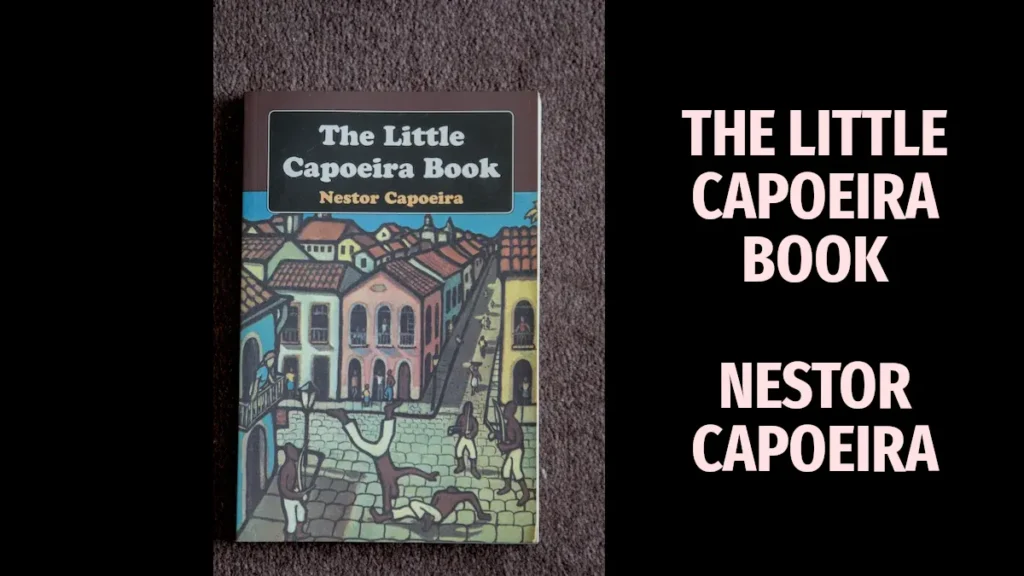
- Author: Nestor Capoeria
- Style: Brazilian Capoeira
- Buy it here: The Little Capoeira Book
The Little Capoeria Book has been on my bookshelf since I first discovered the art of capoeria as a teenager. YouTube didn’t exist yet, so almost all the information I had on this Brazilian martial art came from this little book.
Sometimes, reading older East Asian martial arts classics can be challenging. The culture and language used seems impenetrable at times. But the Little Capoeria Book is different. As a South American martial art, the culture and philosophy explored in this book are much more straightforward and accessible.
Reading The Little Capoeira Book will quickly transport you to a time and place where side street circles of whirling men wearing white were common.
Although I’ve never studied Capoeria, aside from learning a few moves at home, The Little Capoeria Book is still one I love to come back to occasionally and read.
Hagakure
- Author: Yamamoto Tsunetomo
- Style: All styles
- Buy it here: Hagakure
If you’ve ever imagined yourself as an ancient samurai warrior (perhaps after watching Tom Cruise?), you’ll want to pick up this book by Yamamoto Tsunetomo. Written in the early 18th century, it showcases the life of the samurai warrior class from the days of feudal Japan.
Along with Bushido: The Soul of Japan, the reader gets a complete picture of what the Japanese thought of Bushido, the martial code. Remember, this book is a product of its time and hasn’t been censored for the ideals and expectations of modern readers. Some criticize the book for glorifying self-sacrifice, and even if you disagree with Tsunetomo, you’ll still find lots to like in this true classic of martial arts.
- The importance of decisiveness in battle
- The criticism of softening traditional values
- How simplicity and minimalism help facilitate focus on martial and ethical training
- Loyalty and Honor
- The Warrior’s mindset
Now Stop Reading and Go Train!
I hope you found some exciting additions to your collection of classic martial arts books here. The history, culture and philosophy of martial arts is a facsinating subject but don’t let it distract you from what you should be doing, training!

